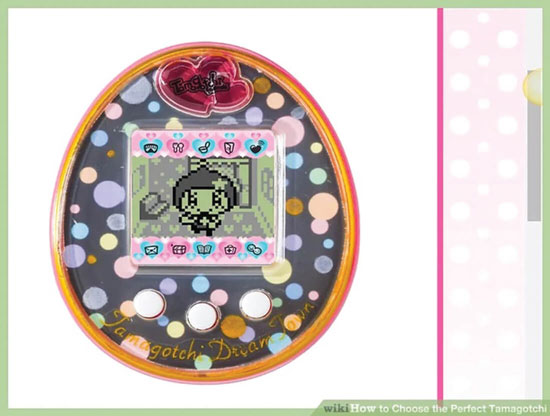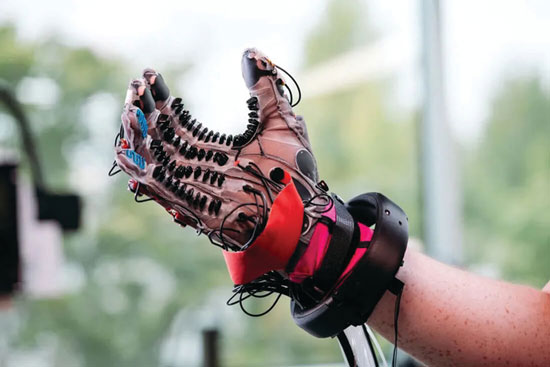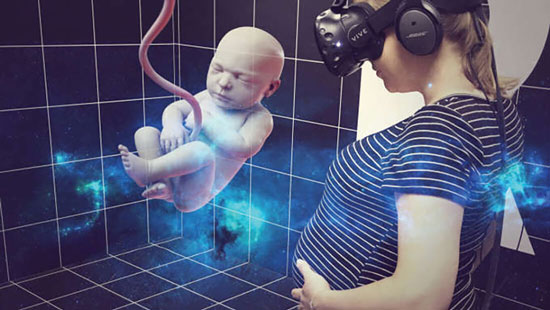Digital Children: Nightmare or Dream Come True? | |
Digital Children: Nightmare or Dream Come True?Real-time, virtual babies are coming to a metaverse near you and they may even have souls. What???
That’s what Catriona Campbell is predicting. She is one of Britain’s leading artificial intelligence (AI) experts and one of the UK’s top authorities in emerging and disruptive technologies. Virtual babies are coming to a metaverse near you. |
 Tamagotchi is a game where you care for a creature hatched from an egg. We’ve talked a lot about AI in this column over the years, but this glimpse into the future takes the cake. The next generation of AR (augmented reality) glasses and haptic gloves (wearable devices that, among other things, simulate tactile sensations of virtual objects), coupled with AI (artificial intelligence or systems or machines that mimic human intelligence that can perform tasks and improve themselves based on information they collect), are all set to combine to create digital children for people who want to be parents without complications and challenges; people who want to be able to turn their parenting experience on and off; people who choose for various reasons not to bring a child into this world, but still want a parenting experience.
Parents of cyber children would be able to see and interact with their virtual offspring on any schedule los padres please. They would be able to design, hold, cuddle and play with their child. There would be no trouble putting the kids to sleep at the whim of Mommy and Daddy, no need for costly childcare or babysitters or diapers or school tuition or medical care... or anything! These parents would be able to build a home in a metaverse, i.e., a virtual, digital world, decorate the nursery, send a child to school, take the child to museums, parks, beaches, shows, libraries, concerts... all kinds of activities. They would have all the perks of parenthood with none of the challenges that go along with that. Oh my, what the what?
A Little History
In 1996, Tamagotchi was a Japanese hand-held game shaped like an egg. In a Tamagotchi game, you care for a small creature that hatches from an egg. You must play with, feed, and care for it to keep it healthy and happy. If improperly cared for, a Tamagotchi may die or run away. Owners had to give medicine when they were sick, and clean up after they’d been to the toilet. The state of the creature’s happiness and hunger levels were indicated by meters, which were monitored frequently.
Baby simulators, or electronic baby robots, have been used extensively in Jr. High and High School classes designed to replicate the experience of parenting a newborn. The idea was to discourage teen pregnancies.
The baby bots had to be fed, burped, cleaned, kept warm and rocked. It is not unusual for students to be up at 3 a.m. with relentlessly crying baby bots and for them to show up at school the next morning begging the teacher to take the baby back. The RealCare Baby, with a starting price tag of $649, is used in nearly 30,000 schools and organizations in more than 90 countries. (P.S.—it hasn’t made much difference in teen pregnancy numbers.)
The Tamagotchi Generation
Campbell has dubbed her vision of a future digital-child generation as “The Tamagotchi Generation.” She is confident AI technology “will lead to the first, fully digital demographic which, although somewhat strange on first appearance, in fact, represents what could be one of mankind’s most important technological breakthroughs....” Campbell thinks we are well on the way to creating a virtual generation that will be very real to their parents. She has postulated that parental satisfaction could be even higher with virtual children, with more control over how their digital spawn is designed. Their lifespan could be pre-programmed and exist in real time, or allow parents to “activate” them at their convenience as children on-demand.
Hannah Sparks, writing for the NY Post, suggests, “The average American child costs parents more than $230,000 by the time they reach the age of 17, according to the U.S. Department of Agriculture. A digital kid, on the other hand, could have all its needs met for less than $25 per month—that’s just about $5,100 by the time they reach high school graduation—according to the UK’s leading artificial intelligence expert. How wonderful it could be for would-be parents to practice on digital kids before having their own. Or for childless couples who can’t have a family to become parents.
 |  Haptic gloves simulate tactile sensations 0f virtual objects. On the dark side, what about people who might abuse digital children? What about pedophiles using the technology? Oh, there are so many discussions to be had!
What’s This About “Soul?”
A Google engineer, Blake Lemoine, was just fired after declaring that Google’s LaMDA technology (language model for dialogue applications) is self-aware and has a soul. What we know to be true is that many in the broader AI community are considering the long-term possibility of sentient or general AI but feel it is too early to anthropomorphize today’s conversational models like Siri and Alexa. We know that AI programs have the ability to “learn” their humans. Can the programs become human?
Kathryn Johnson from Arizona State University postulates, “If people do not think of AI as having a soul, they may deny AI beings any moral rights or responsibilities. On the other hand, people with a strong belief in a soul may be the most likely to attribute souls to AI as well, and consequently be the most likely to advocate for AI personhood.”
I just want to go hug my real grand-daughters, my real husband and my real dogs right now. I know for a fact they have souls.
Vamos a Ver!  | | | | | | | | | | | | | |
|
|
|
|
|













